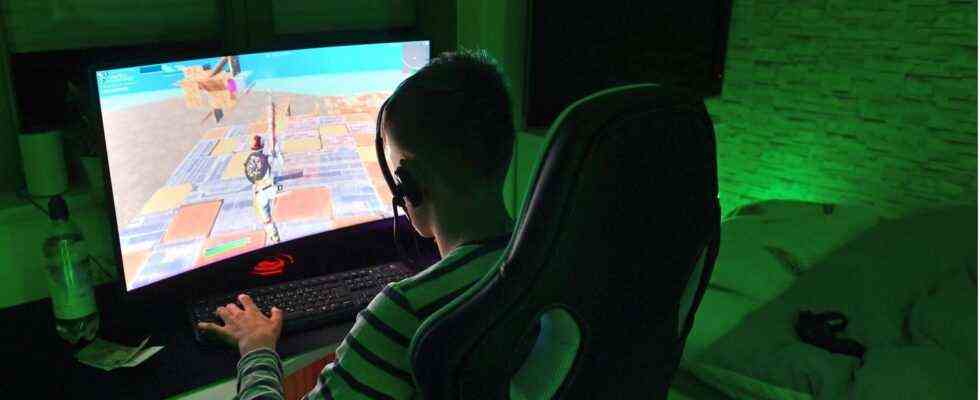New study shows
TikTok, Instagram and video games: media and gambling addiction among children increased during Corona
A boy is playing in his nursery. Fortnite – one of the world’s most popular games among children and adolescents.
© Frank Hoermann / Sven Simon / Picture Alliance
The corona pandemic has hit children and young people hard. Many suffer from loneliness or mental illness. They also spent more time on smartphones and PCs. According to a study, the proportion of those who play or chat in an unhealthy way has also increased.
According to a study, abnormal computer game behavior and social media addiction have increased among children and adolescents in the corona pandemic.
The German Center for Addiction Issues in Children and Adolescents (DZSKJ) came to the conclusion in a study commissioned by the health insurance company DAK that more than four percent of ten to 17-year-olds in Germany have so-called pathological usage behavior.
In the field of computer games, the number of those affected with addictive behavior increased from around 144,000 in 2019 to 219,000 this year, and when using social media platforms such as Tiktok, Snapchat, WhatsApp or Instagram from 171,000 to 246,000. The DAK will present the study results this Thursday. They were available to the German Press Agency in advance.
Gambling addiction: experts warn of serious consequences
“The rise in media addiction is mainly due to the growing number of pathological users among the boys,” said study director Rainer Thomasius from the DZSKJ at the University Medical Center Hamburg-Eppendorf (UKE). He warned of the consequences of neglecting activities, family, friends: inside and a shifted day-night rhythm.
“Since personal, family and school goals take a back seat, development tasks typical of age are not adequately solved. The result is a standstill in psychosocial maturation.” Thomasius promoted “continuous scientific recording” and preventive and therapeutic offers.
The experts see a pathological or pathological use when a loss of control, a “prioritization over other activities” and a continuation of the use despite negative consequences can be observed. “The behavior usually lasts for a period of at least twelve months. This results in significant impairments in personal, social and school-professional areas of life.” According to the study, pathological gamblers and social media users gamble or chat for four or more hours a day.
Study with repeated interviews with parents and children
The basis of the study is a repeated questioning of parents and children by the opinion research institute Forsa. The first took place in autumn 2019 before the pandemic, the second at the time of the first school closings in spring 2020, another in November 2020 before schools were closed again and the fourth finally in May and June of this year when schools were closed after months of closings and alternating classes slowly returned to a certain normality.
The children and adolescents were asked about the duration and their motives for using games and social media platforms and also about possible negative effects they notice on themselves, for example when completing tasks, with school grades, in relation to each other to friends or family members.

Even in the first surveys, which were already published, it became clear that children and young people spent much more time on cell phones, computers or games consoles during Corona: Before that, it was almost two hours on weekdays on Instagram, Snapchat, TikTok or other platforms. During the first lockdown in spring 2020, this increased to more than three hours a day. In November, when schools were mostly open, but the range of leisure activities was still severely limited, usage fell slightly again, but was still well above the level of 2019. That was also the case in May and June.
Two hours and twelve minutes a day
A similar development was seen in games: Before Corona, the children and adolescents surveyed were occupied with computer or online games for an average of one hour and 23 minutes on weekdays; in April 2020, usage increased sharply to two hours and twelve minutes a day . Then there was a slight decline again.
The usage times for games and social media during the week and also on the weekend are still “well above the pre-crisis level,” said Thomasius. Another survey will be sought in the coming year. This could show whether Corona has left permanent traces in usage behavior.
The president of the professional association of paediatricians, Thomas Fischbach, was pessimistic. “Especially for children and adolescents who had previously used media at risk, the lockdowns were a considerable health risk factor that virtually catalyzed the transition to pathological media use.” It is to be feared that this undesirable development cannot simply be completely reversed even after the end of the pandemic.


